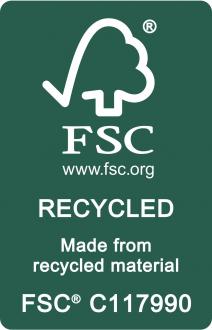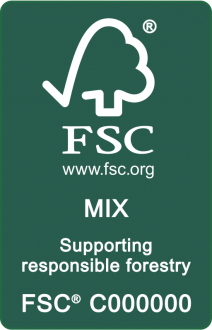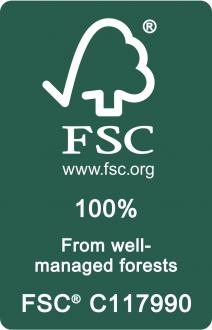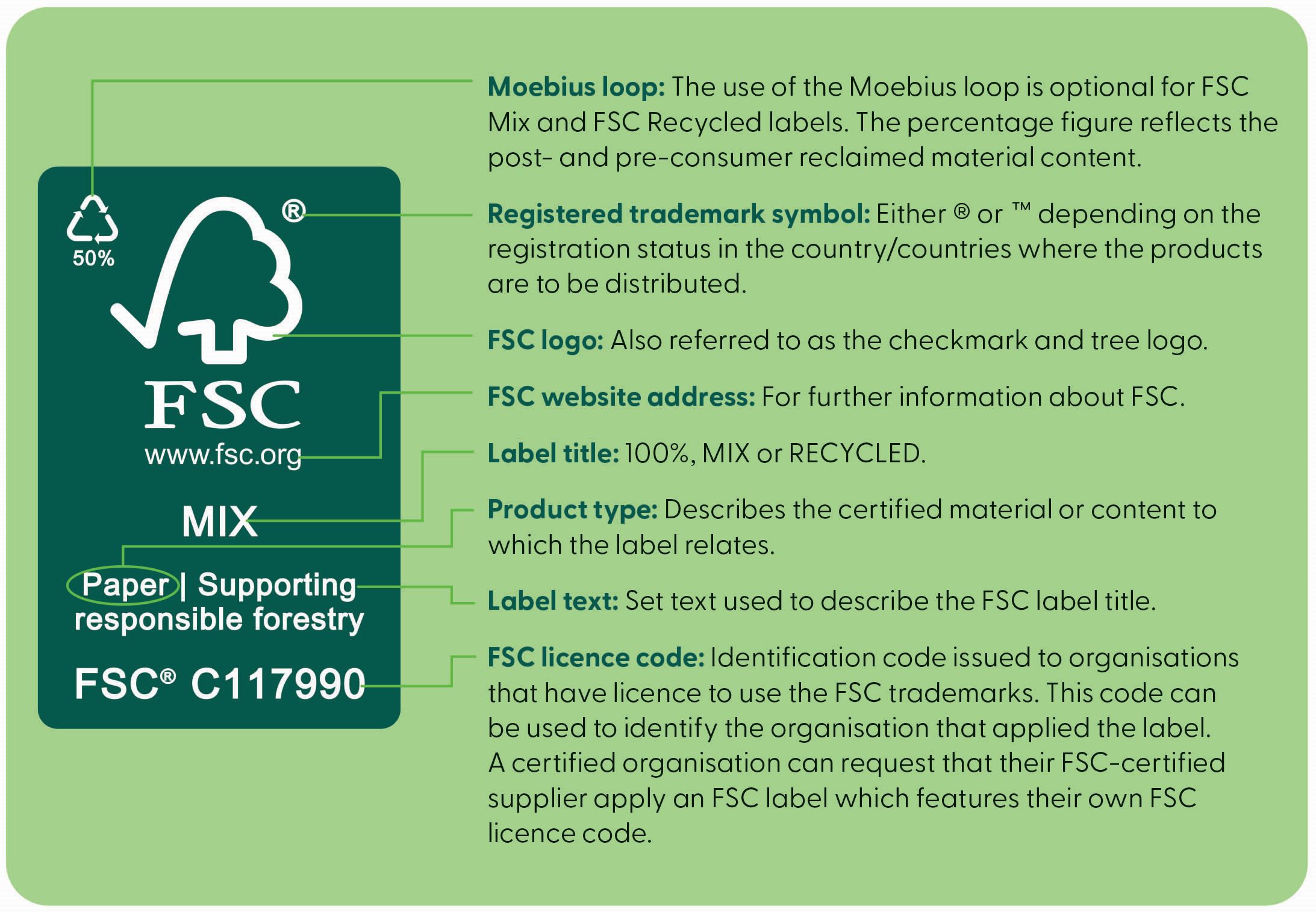What do the FSC labels mean?
This video explains how each of the three FSC labels helps to ensure that our forests remain for all, forever.
The 3 FSC labels:



FSC Recycled
All the forest-based materials in products or packaging bearing this label have been verified as being 100% recycled (either post-consumer or pre-consumer reclaimed materials).
FSC Mix
All forest-based materials in products or packaging bearing the FSC Mix label must either be from FSC-certified forests, verified as recycled or classed as controlled wood. Controlled wood is not from FSC-certified forests but it mitigates the risk of the material originating from unacceptable sources.
FSC 100%
All forest-based materials in products or packaging bearing the FSC 100% label must be sourced from FSC-certified forests.
What's in a label?

-
Why are there 3 labels?
We believe that using both materials from responsibly managed forests and recycled forest-based materials helps to ensure forests for all forever, whilst enabling us to enjoy forest products in our lives.
FSC Mix products can also contain limited amounts of controlled wood – forest-based material that is considered low risk in terms of illegal logging and other key unacceptable practices. The main goal of introducing controlled wood into the FSC system was to meet the demand for FSC material in the marketplace, while still avoiding unacceptable sources.
The FSC Controlled Wood Strategy outlines a vision and overall aim for the future of FSC Mix and the controlled wood used in its production. The overarching goal, is to increase the area of FSC-certified forests, leading to a decrease in reliance on controlled wood.
-
What is controlled wood?
Controlled Wood is material which has been assessed using the relevant FSC standards and found to be at a low risk of coming from the following unacceptable sources:
- illegally harvested
- harvested in violation of traditional and human rights
- harvested in forests in which high conservation values are threatened by management activities
- harvested in forests being converted to plantations or non-forest use
- from forests in which genetically modified trees are planted.
-
How much controlled wood is in FSC Mix products?
There are 3 'control systems' that FSC certificate holders can use to produce FSC-certified products: transfer, percentage and credit.
When produced under the 'percentage system', a product must contain a minimum of 70% FSC-certified input and/or recycled input; the rest (maximum 30%) must be controlled wood.
If the product is produced under the 'credit system', there is no minimum FSC input, however, only a proportion of products can be labelled and/or promoted as FSC certified. Again, any forest-based inputs that are not from FSC-certified forests or recycled sources must be controlled wood.
-
What's the difference between post-consumer and pre-consumer reclaimed materials?
Post-consumer reclaimed material is reclaimed from consumer or commercial products that have been used for their intended purpose by end-users. Examples include paper and card from kerbside recycling collections.
Pre-consumer reclaimed material is reclaimed from a process of secondary manufacture or further downstream industry, in which the material has not been intentionally produced; is unfit for end-use; is not capable of being reused on-site in the same manufacturing process that generated it. Examples include sawdust, damaged stock and off-cuts. -
How much pre-consumer reclaimed material is in FSC Recycled products?
There are 3 'control systems' that FSC certificate holders can use to produce FSC-certified products: transfer, percentage and credit.
For FSC Recycled wood products produced under the FSC ‘percentage system’ a minimum of 70% of the inputs must be post-consumer reclaimed; there is no minimum for paper products, but all forest-based inputs must be verified as reclaimed.
For FSC Recycled wood products produced under the 'credit system', there is no minimum post-consumer reclaimed input, however, only a proportion of products can be labelled and/or promoted as FSC certified. Any forest-based inputs that are not post-consumer reclaimed must be pre-consumer reclaimed.
-
Who can use the FSC labels?
The FSC labels are used on FSC-certified products and packaging. An FSC label can only be applied under a valid FSC certificate and it's use must be authorised by the certificate holder's FSC-accredited certification body.
